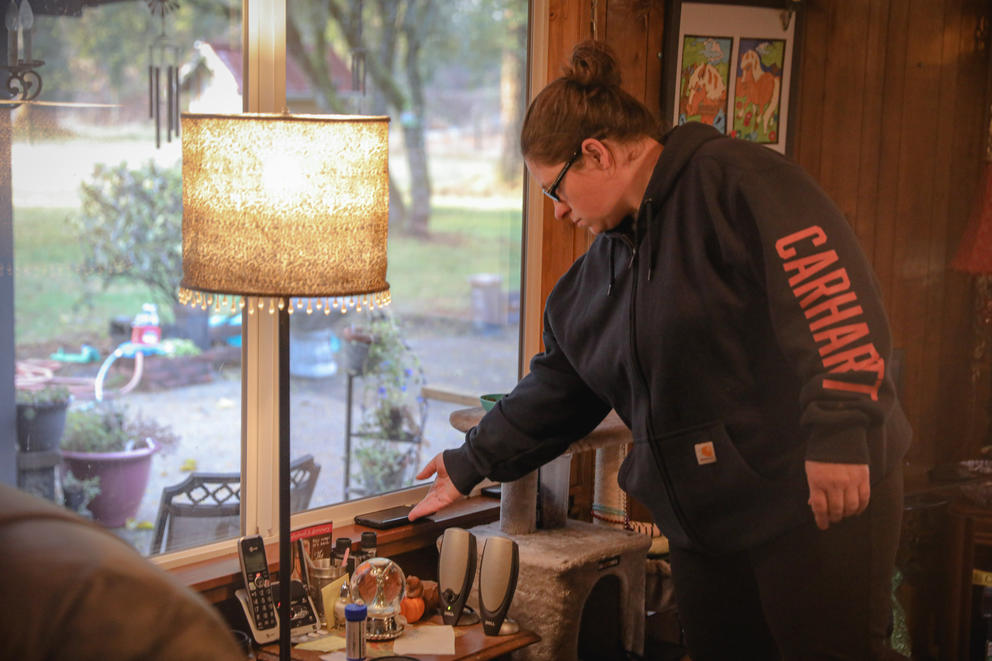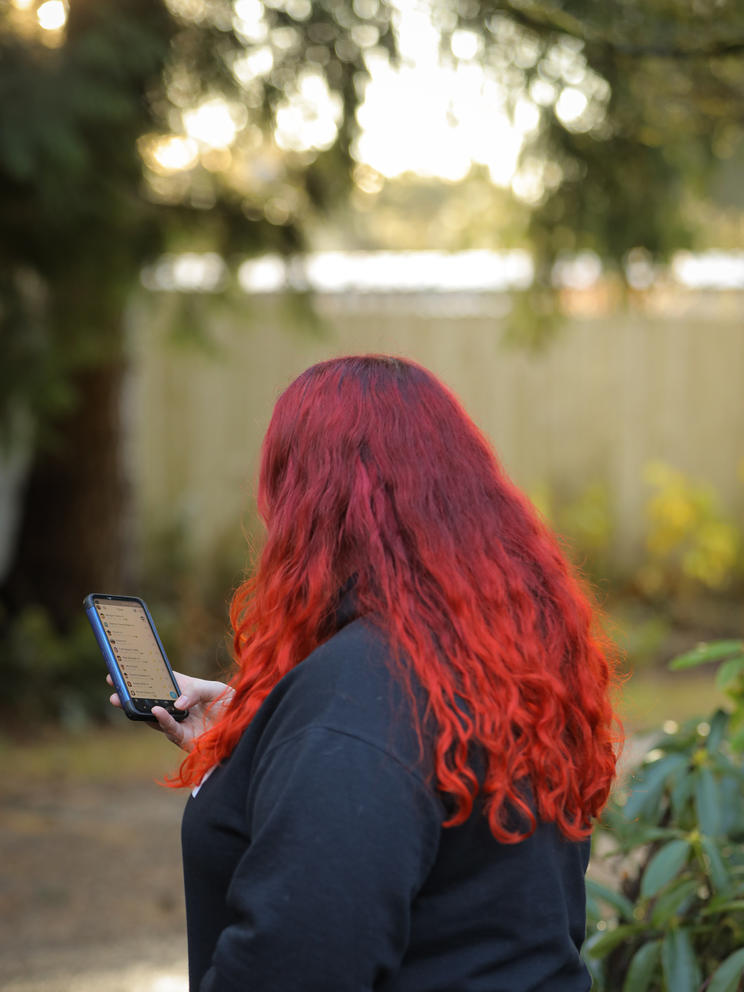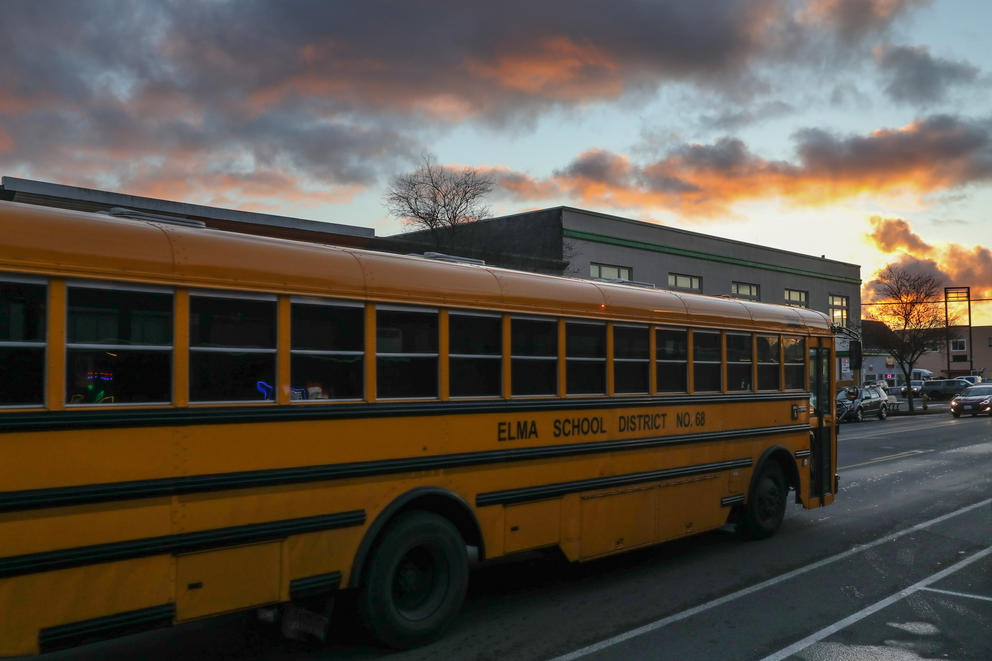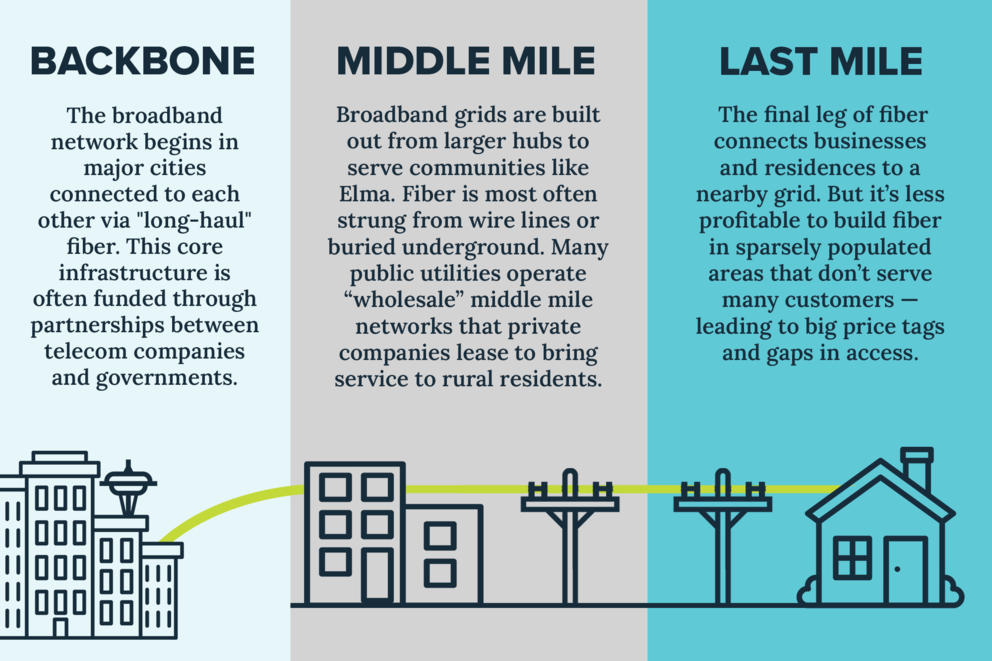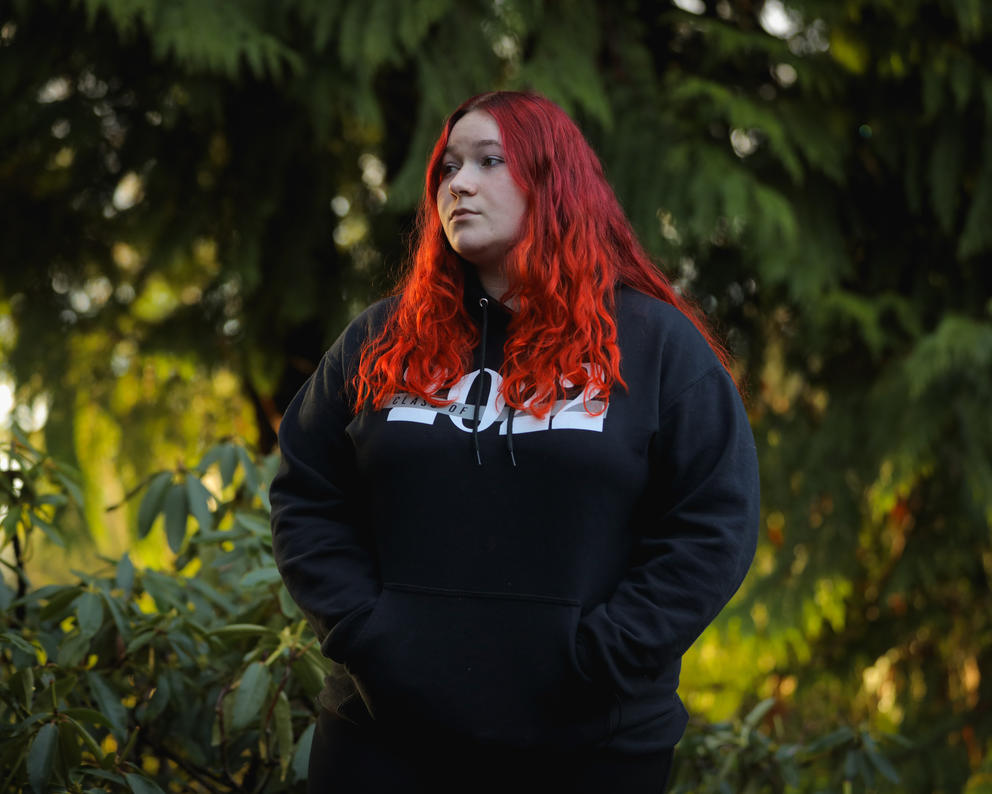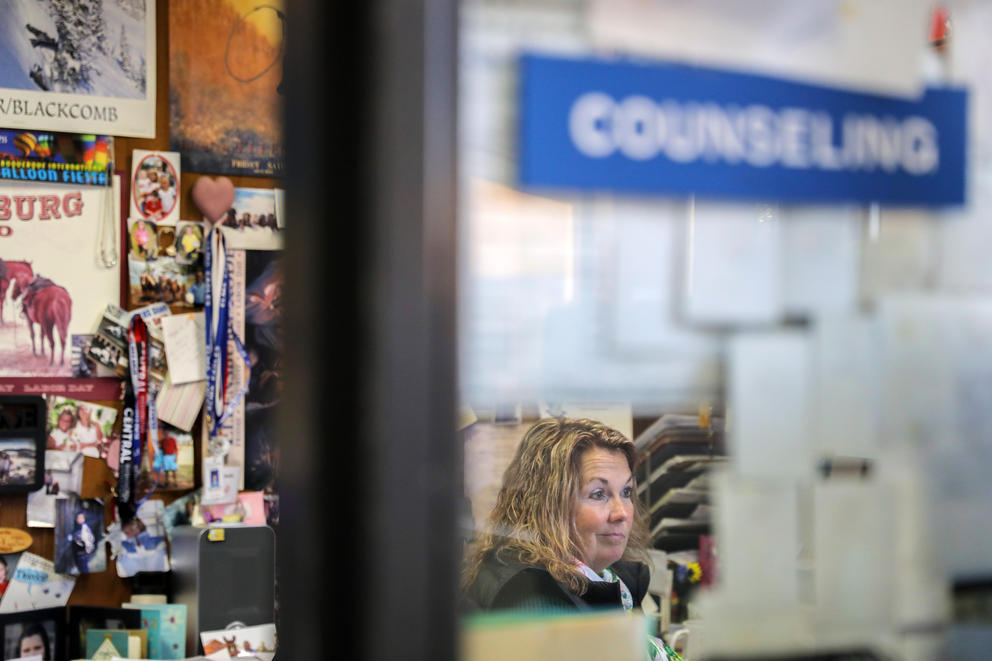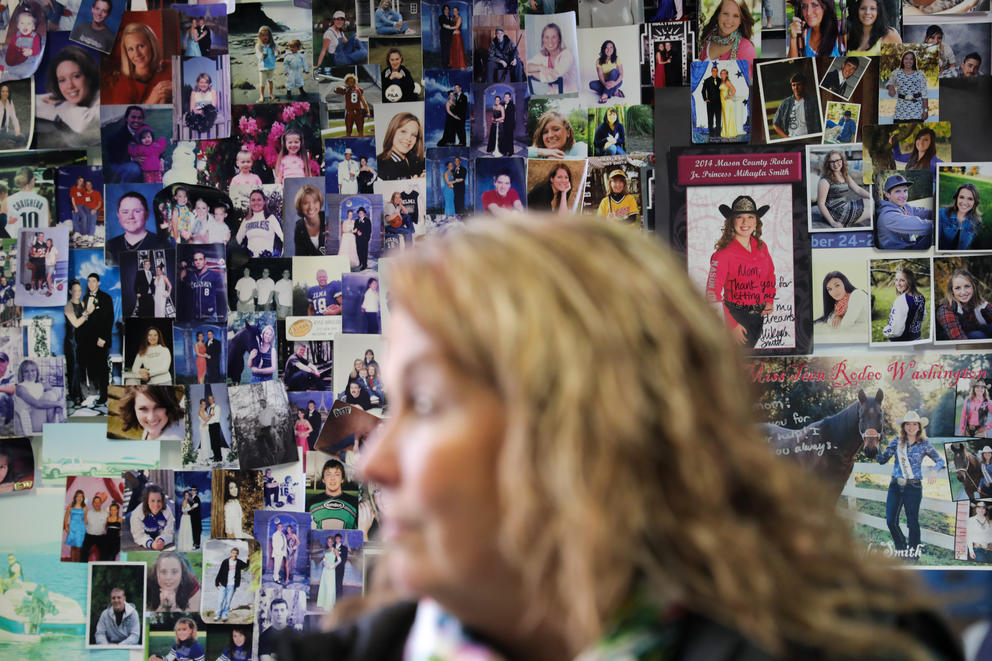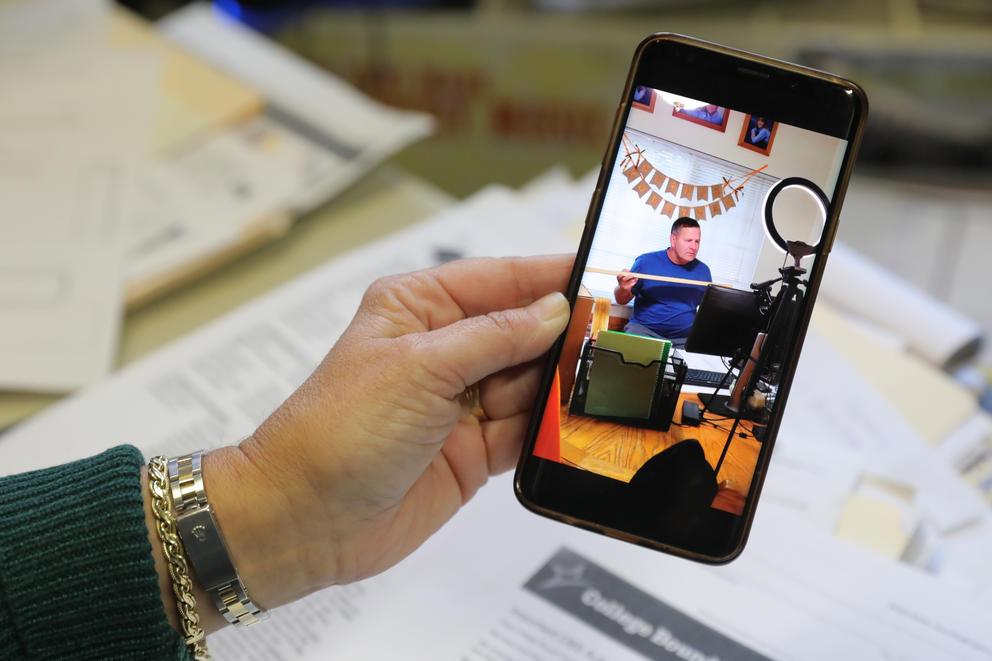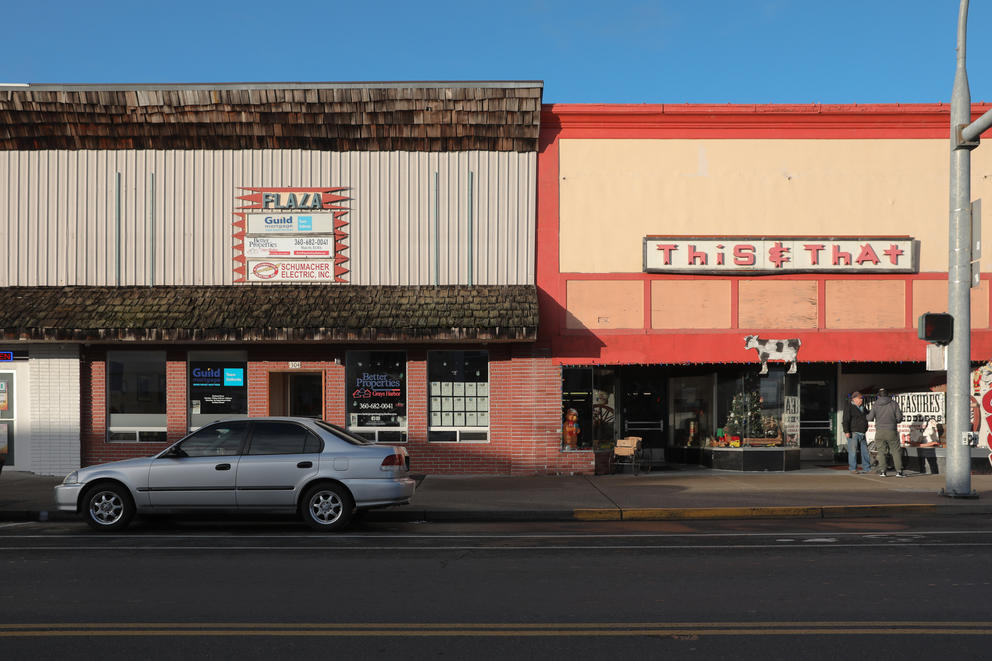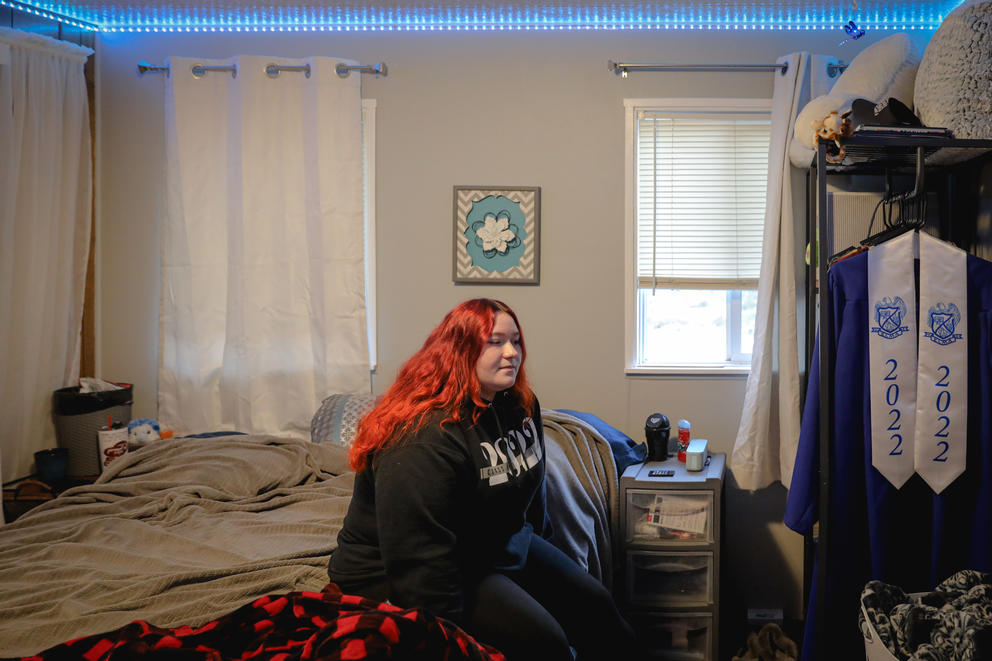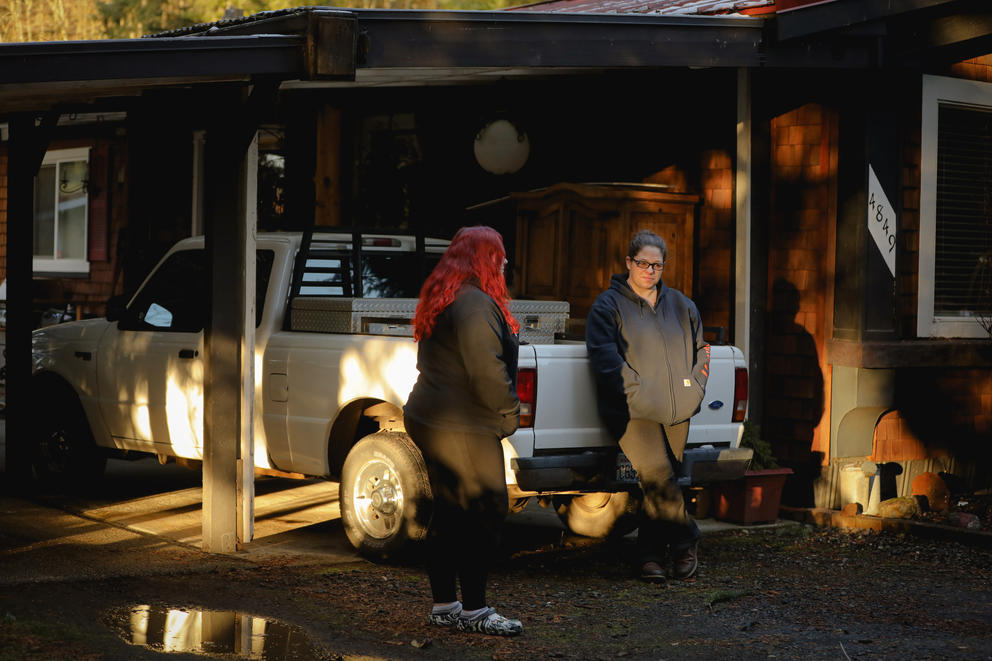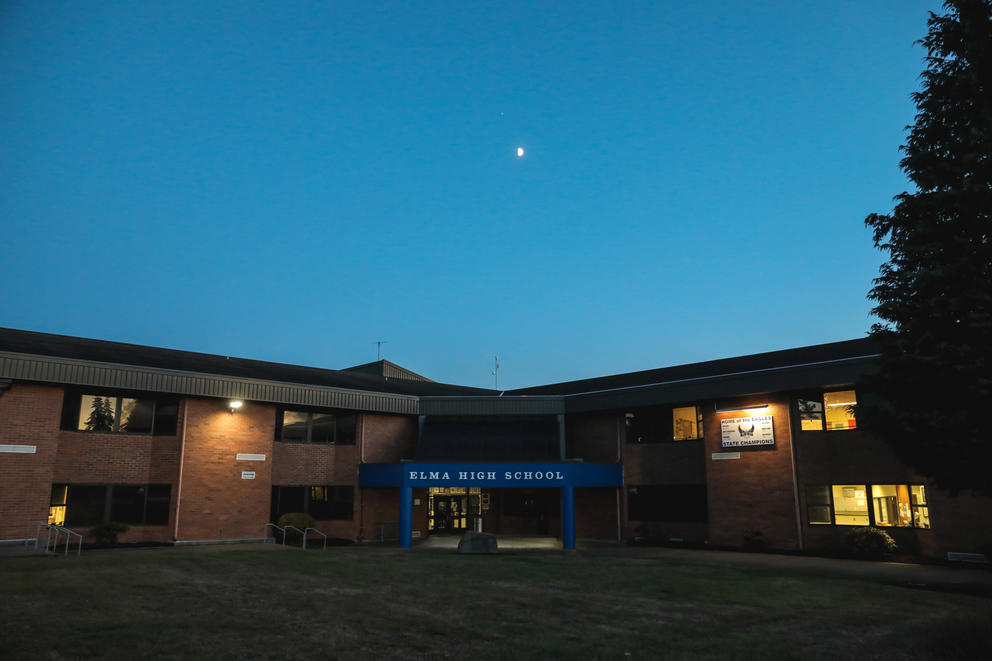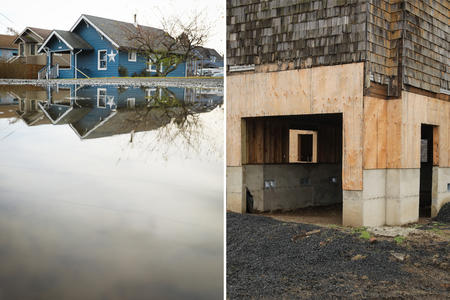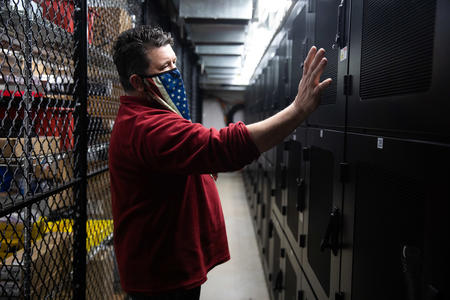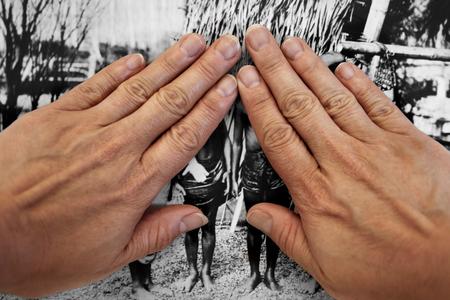For many rural Americans without internet access, it’s the “last mile” of infrastructure that separates them from the grid. For Armstrong, it’s the last 75 feet to that box.
Bridging that distance could cost $1,000-$2,000 — according to a Comcast technician’s on-site estimate — that the 39-year-old housekeeper doesn’t have.
Accessing the internet for Armstrong’s family still requires piggybacking off a weak, elusive cell signal — pacing around the house in search of bars or leaving a hotspot out in the rain.
“A lot of people would almost picture being several miles outside of town, like out in the boonies somewhere,” said Armstrong, who lives just beyond the city limits of Elma, a town of 3,400 in east Grays Harbor County. “We’re really not.”
In recent years, internet access has increasingly become a prerequisite for participating in modern life: getting medical care, filing your taxes, or paying your rent can all require logging on. But Wi-Fi connectivity taken for granted by city-dwellers often remains out of reach in places like Elma.
A patchwork of faulty or incomplete attempts to map high-speed broadband access nationwide has left the number of homes with no or slow internet widely undercounted, but one tally by Microsoft estimates as many as 120 million people — roughly one-third of Americans.
The federal government has paid telecom giants like AT&T and CenturyLink tens of billions of dollars in subsidies to close those gaps, but some have continued to collect payments without meeting promises on expanding their networks. Meanwhile, other private telecoms have derailed public broadband efforts in Grays Harbor and other parts of rural Washington.
This is the third story in a three-part series on infrastructure in Grays Harbor County from Crosscut’s WA Recovery Watch, an investigative project tracking federal dollars in Washington state.
Karen Affeld, executive director of the North Olympic Development Council, a nonprofit that helped convene broadband action teams in Clallam and Jefferson counties, said the favored strategy of paying loosely regulated telecoms to build out exclusive networks into unprofitable areas has included little public oversight, accountability or meaningful competition.
“You end up with a monopoly situation,” she said. “If the service is unsatisfactory, there aren’t other options for people. They are just stuck.”
Broadband advocates now see a rare chance to reshape the highly consolidated online landscape, thanks to a $42 billion program tucked into President Biden’s 2021 Infrastructure Law. Unlike previous federal subsidies, the most ambitious single deployment of federal resources yet will flow through state governments, which are encouraged to prioritize open-access networks, a policy intended to ensure competition.
Even amid a growing acknowledgement of the internet as an essential utility, some advocates remain skeptical of whether passing money through states will be enough to overcome decades of fragmented policy and keep towns like Elma from slipping through the digital cracks.
Building on a patchwork
A school bus pulled into the semicircular driveway of Satsop Elementary, a little red-shingled schoolhouse that stands under the silent watch of two empty nuclear silos, remnants of a 50-year-old failed infrastructure project that came to be known as “Whoops.” Rob Hanny, tall, with close-cropped hair and flecks of gray in his reddish-brown goatee, pulled his hands from his pockets and motioned to a cable running from a nearby utility pole to a white box hanging on the side of the school.
It’s a Wi-Fi hotspot, one of several that Hanny’s agency – the Grays Harbor Public Utility District (PUD) – deployed during the early days of the pandemic. Hanny lives about a 10-minute drive north along winding forest roads, past a Christmas tree farm and around a river bend. He can’t get internet there, so he’s spent days at the elementary school, sending work emails from his parked car.
“To be honest, I started debating, maybe we’re going to have to move,” Hanny said, “or I’m going to have to get an apartment in town or something.”
PUDs emerged in Washington in the 1930s, during a period when rural areas in Washington were grappling with how best to provide a different essential service that many then still needed: electricity. At that time, rural communities lacked the legal authority to form public utilities, and it took a statewide ballot measure, passed in 1930, to pave the way for public electricity.
Internet service has followed a similar trajectory. Until a repeal in 2021, Washington was one of 20 states that banned or restricted public entities from providing internet service. Most of those laws are still on the books, and could pose major obstacles to federal efforts to expand access.
Amid the influx of federal stimulus dollars, many of Washington’s PUDs are now jockeying for state infrastructure grants, alongside ports, tribes, and other government entities. In 2021, the Grays Harbor PUD applied for federal funding to build new fiber lines to connect 900-plus homes in Elma and the town of Oakville, plus some unincorporated areas in between. Like the PUD’s existing fiber lines, the expansion was meant to be leased to private companies to serve customers with internet.
But a state board rejected their grant application due to an objection from Comcast, which argued it already served about a quarter of the homes in the proposed area. It was one of eight public broadband expansion plans scuttled by objections from private telecom companies, including Comcast and Nevada-based Rural Wireless LLC, in a process that state regulators have acknowledged as fraught and vowed to reform.
Comcast representatives told Crosscut they did not intend to block the Grays Harbor project, only to reduce its scope in areas they claim already receive adequate service.
M’Ryea Terrell, a senior at Elma High School, lives outside Elma, at the end of a street where broadband internet service drops off. When school went online due to COVID-19, her classes would glitch out and disconnect because her DSL internet was so slow. Sometimes she’d go to her grandparents’ house 20 minutes away, but mostly she was home alone, struggling to log into classes through her weak internet connection. “It kind of felt like I didn’t really learn anything that year,” she said. (Genna Martin/Crosscut)
Hanny said he understands why for-profit companies like Comcast don’t want to serve areas like Satsop — it’s expensive to build the new infrastructure required to get fiber out to all these houses. Without government grants, the PUD would be in the same position, and could never justify the investment to their board.
That’s what confuses Hanny about Comcast’s objection. The point of the grant was to pay for the infrastructure so that Comcast, or any other company, could then use it to sell internet to more customers.
“They’re objecting to something they could actually use to their benefit,” Hanny said, grinning with a hint of frustration.
Washington state has earmarked more than $400 million for broadband infrastructure grants, most of it federal aid from the American Rescue Plan. The current grant application round closed on Tuesday, Jan. 17.
When Hanny pitches this partnership to local managers at Comcast and Centurylink, he said, they seem to see the logic. But he has yet to get an audience with the executives who actually make decisions.
“You can use our fiber, you don’t even have to build,” Hanny said, describing his pitch. “‘Oh, that makes total sense, we could really expand our footprint.’ [But] it goes up the food chain and just dies.”
Much of Katelin Rayment’s final years at Elma High School were experienced from home due to COVID-19 closures. Without reliable internet service at her house, it became a constant battle to finish coursework and keep up with her classes. She would do homework in her mom’s car outside their home, or outside the library where she could get a good-enough cell phone signal to finish assignments. (Genna Martin/Crosscut)
Digital classrooms, disrupted
The COVID-19 pandemic turned the long standing digital divide in rural communities — perhaps formerly just an inconvenience or afterthought — into an unignorable crisis. Public education became something students did from a computer at home. No internet, no school. Armstrong in Elma suddenly had a teenage daughter, Katelin Rayment, struggling to log into the classes she needed to graduate.
Rayment’s school issued her a Wi-Fi hotspot, but it was iffy — some days it worked, others not so much. Armstrong sometimes had luck placing the hotspot — or her cell phone, which could sometimes substitute as a hotspot — outside in the garden, where the signal was better.
“On the days it was raining I would put it in a Ziploc baggie,” Armstrong said, “just to try and get signal in the house.”
In some ways, Rayment said she found remote learning refreshing. Whereas before she’d been too shy to ask for extra help, now she could work at her own pace, without comparing herself to other students. But for someone who didn’t see herself as a confident student, the added challenge of chasing a Wi-Fi signal compounded her academic frustration.
“The hotspot would stop working, I’d get weeks behind and I’d have to do everything on paper,” Rayment said. “Which was, it was doable, but it would have been nice to attend more than one Zoom meeting in two years.”
The high school’s sole counselor, Bobbi Smith, said she knows far too many families in the same position. A quick look at the walls of Smith’s office — covered in photos of students riding horses, cheerleading, sporting soccer and football uniforms — attests to Smith’s tenure at Elma High, which spans both Rayment and her mother.
The district tried to bridge the technology gaps by distributing laptops to students, but those were of little use without an internet connection, Smith recalled. And the hotspots — the ones Armstrong would put in a plastic baggie in her garden — were sometimes a source of further frustration for students when they would conk out, or just be unusably slow.
Smith said she and others at the school often stepped in with a low-tech solution, printing assignments and dropping them off at students’ homes. As she checked in on students across the district, she developed a mental map of gaps in the internet grid.
“When we hadn’t heard [from families], I would actually make my husband after school drive around to the different places,” Smith said. “Knowing my seniors … needed classes in order to graduate, I would make the copies and deliver them to their houses, knock on their doors.”
A $230,000 gap
Smith has her own internet story. Her husband is building a house for her daughter on a piece of property a few miles north of Oakville, where Smith lives in remote southeast Grays Harbor County.
The family reached out to Comcast, which offers service in Oakville proper, to ask about getting connected. A Comcast construction specialist emailed them back, saying they were so far outside Comcast’s service area that the cost would “exceed $230,000.”
Smith interpreted the quote as a polite “We’re not interested.”
“When contractors are bidding jobs they don’t want, they might throw out this hellacious bid knowing that they’re not going to get the job,” she said.
(Comcast spokesperson Andy Colley said the company treats service-extension requests on a case-by-case basis, but he’d never seen anyone pay $230,000 for a connection.)
What further frustrated Smith was that the Grays Harbor PUD’s plan promised to get broadband to her daughter’s property at a fraction of the price. (Although her street was not included in the grant proposal, it is part of a phase-two expansion plan.)
Were the PUD to get both phases funded, Smith’s daughter could get connected for a one-time setup fee of $150, plus $25 per month to lease the fiber, according to Sara Travers, telecom business coordinator for the PUD. (She’d also have to pay whatever monthly fee the service provider charged.)
Comcast’s Colley noted that Smith’s property was not one of the addresses the company challenged in its objection, which was submitted to Washington state’s Public Works Board.
“We did not object to another entity serving this customer,” Colley said. “The Public Works Board made that decision when it denied the application from the Grays Harbor PUD.”
(Disclosure: Comcast has sponsored a number of past and ongoing Cascade Public Media events.)
Smith said the absurdity of the $230,000 estimate prompted her to dig further, and that led to the objection that sunk the recent PUD proposal. The pieces didn’t fit. If Comcast didn’t want to serve her area, why obstruct others’ efforts?
She emailed her state legislators about the issue. One responded, mentioning the state’s broadband infrastructure grants and suggesting she get Starlink, a satellite service offered by Elon Musk’s company SpaceX.
Starlink works well for some, but it’s not cheap — $600 up front and $110 per month after. Trees can sometimes block the signal, so it may not work in some forested areas. For Smith, that her legislators were steering her to satellite shook her confidence in the process, which was already low.
“To me,” she said later, “the unwritten communication was, even though there’s millions of dollars coming to our state for connectivity, don’t count on it.”
A new way forward?
If past federal efforts to expand broadband access were plagued by a lack of oversight or accountability, local leaders hope this time will be different.
Washington state officials expect to pull in at least $900 million from the federal infrastructure bill this summer, pending the outcome of a revamped FCC mapping process.
In Washington, only public and nonprofit entities — ranging from public utility districts and ports to cities and tribes — are allowed to apply for funding. But many are expected to partner with private companies to serve customers.
One county is experimenting with a different, fully public, model. Taking advantage of the 2021 law change, Jefferson County’s PUD is getting into the retail telecom business to offer service directly to consumers. They won a $24 million grant last year to build fiber lines to 2,600 homes.
Katelin Rayment, 18, sits in her bedroom in her home in Elma. She can get a weak cell signal by the window, but otherwise internet service is nonexistent inside the house. Rayment said that being stuck at home during the pandemic without regular internet access was extremely isolating and took a toll on her mental health. (Genna Martin/Crosscut)
Even with a massive influx of federal funds, communities looking to public alternatives face old obstacles. Smith’s daughter’s home near Oakville is right near a tract where CenturyLink won a federal grant in 2020. That means the area is blocked from applying for more federal funding, even if CenturyLink doesn’t follow through.
In a June 2021 filing, CenturyLink told the FCC it had built out the networks it had promised in fewer than half of the 33 states where it accepted federal money, including Washington. The company has collected over $500 million each year since 2015 from the federal government through the Connect America Fund.
Between 2009 and 2017, the FCC gave more than $41 billion to private telecoms through the universal service fund to subsidize closing rural service gaps. The money came from fees added to customer telephone bills.
Find tools and resources in Crosscut’s Follow the Funds guide to track down federal recovery spending in your community.
Some feel that universal connectivity will happen only when internet gets treated as a public good, like water or other basic services. Affeld of the North Olympic Development Council compared the internet situation in 2023 to rural electrification during the New Deal in the 1930s, when the government invested heavily in rural co-ops to bring electricity to farmers.
“There came a point where [the government] said ‘Hey, you know what, everyone in the country needs to have access to electric power, and let’s do it,’” Affeld said. “I personally feel like we’re unlikely to see it solved ultimately until it gets dealt with as though broadband was a [public] utility.”
Until then, Rayment and her mother in Elma will continue getting by however they can. Now that she’s graduated from high school, there’s no pressure to submit assignments over a glitchy hot spot.
But living in a dead zone comes with other, subtler costs too. Rayment said one friend told her that coming over to her house was boring, because they couldn’t text, make phone calls or play online games on her PlayStation.
“It hurt, but I understood,” she wrote, suitably, in a text to Crosscut. “When you walk into someone’s house, one of the first things you ask for is the Wi-Fi password.”
Get the latest investigative news
A newsletter for resources, data and behind-the-scenes insight into investigative efforts.

